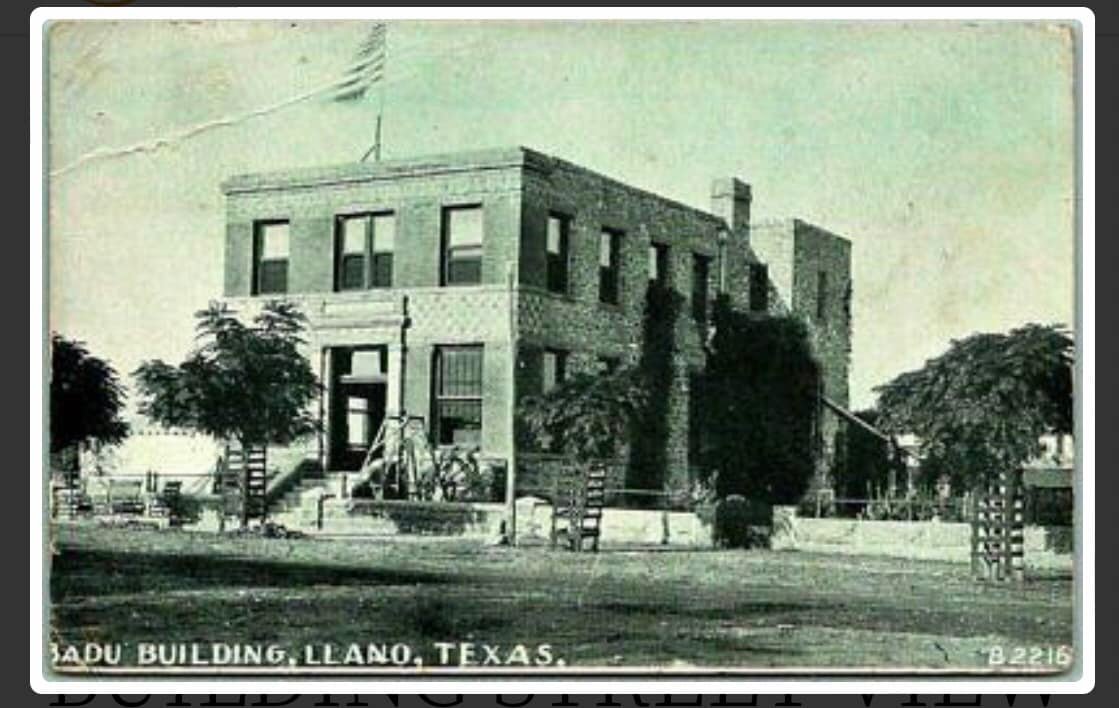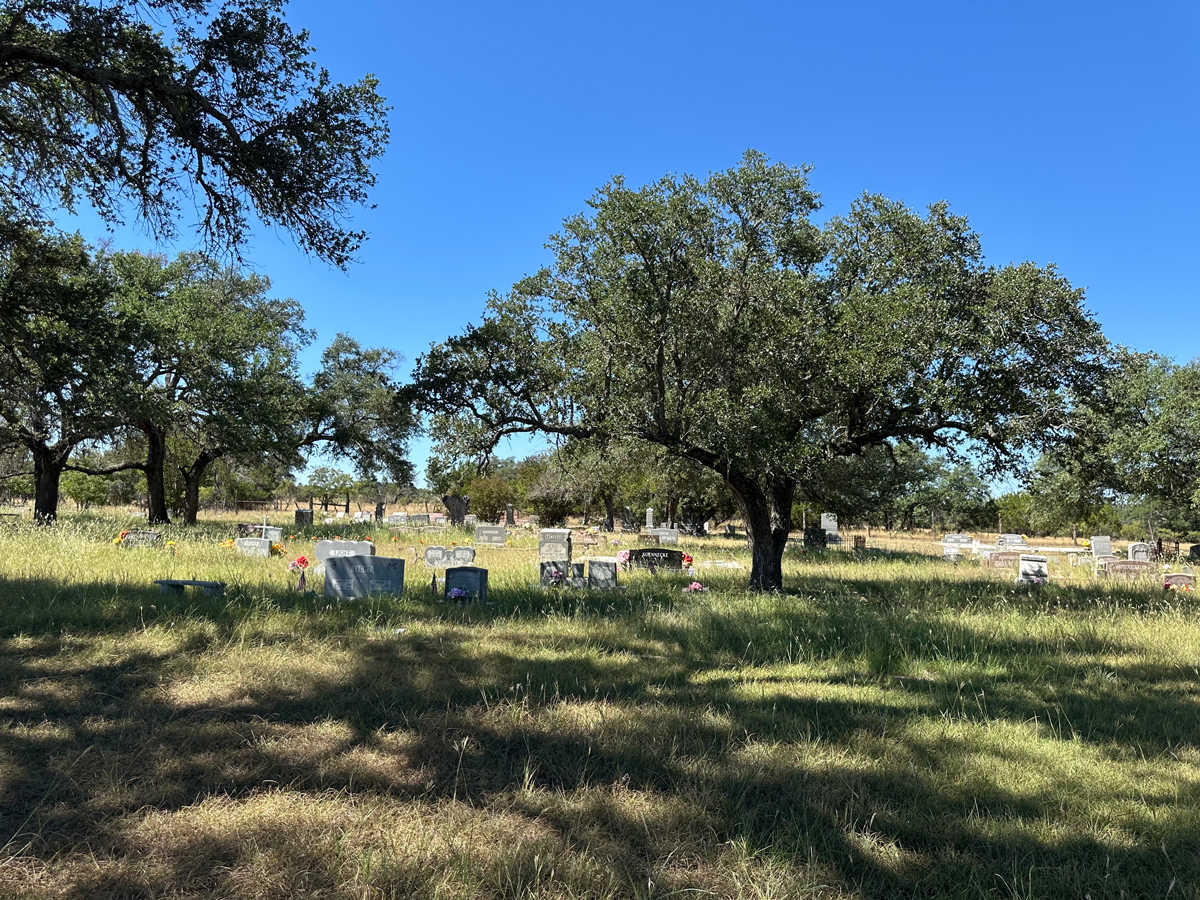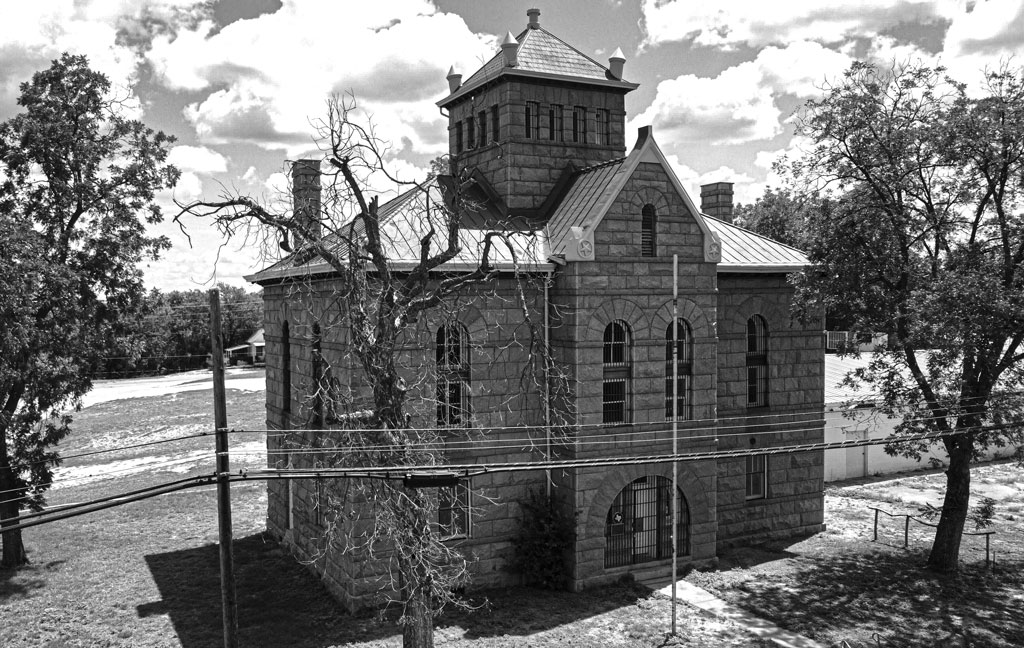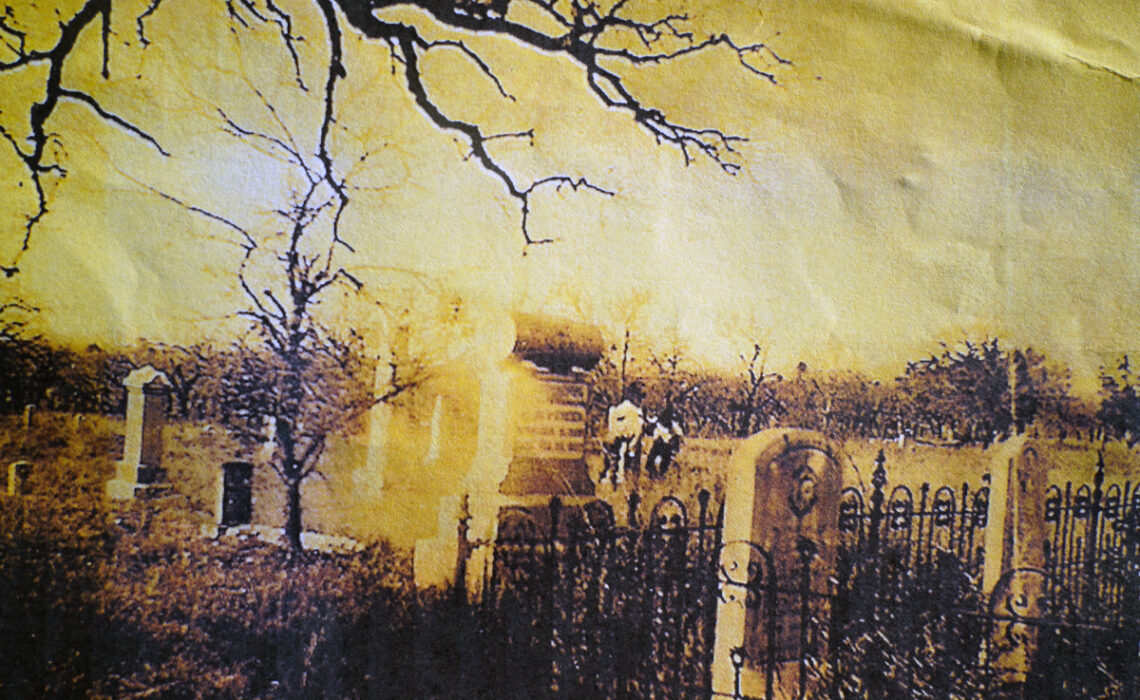
This warped, faded photo shows the Old Bluffton cemetery, which now sits at the bottom of Lake Buchanan. The town was flooded when the lake was created with the damming of the Colorado River, leaving behind the structures and graves of its former residents. Photo courtesy of Vanishing Texas River Cruises
At the bottom of Lake Buchanan rests in pieces the town of Old Bluffton. The once-thriving Central Texas community was consumed by the lake when Buchanan Dam was built across the Colorado River in 1937. Now, it is a watery ghost town, only visible when a devilish drought drains the lake enough to reveal its remains.
You won’t find Old Bluffton on a map, but it isn’t too far from Bluffton, or “New Bluffton,” which lies on the western shore of Lake Buchanan in northeast Llano County along County Road 261, about 5 miles from the town’s original site.
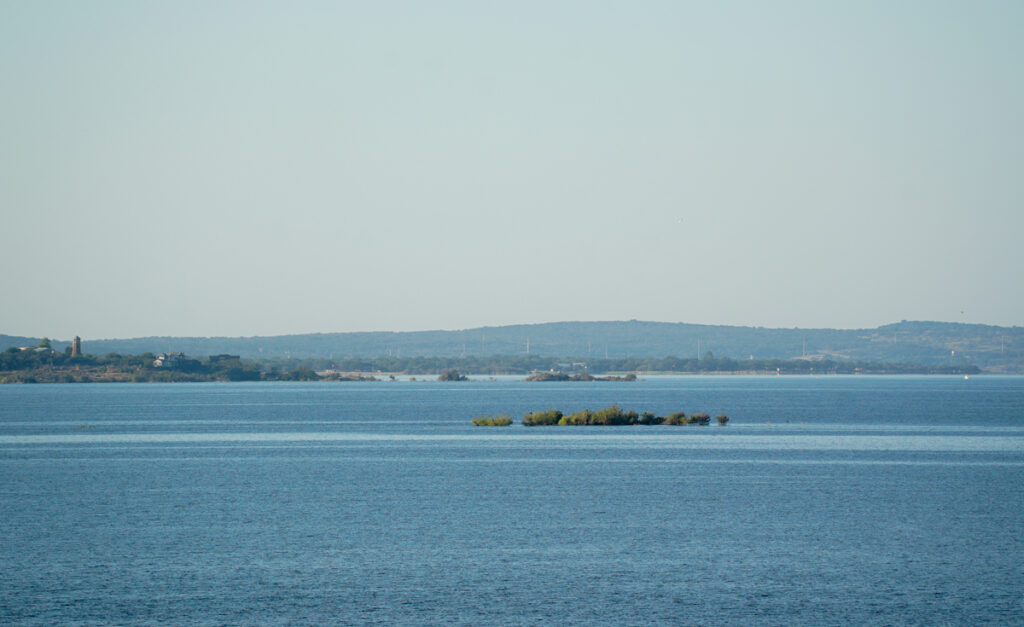
Most everything was left behind when the lake rose, including the frontier town’s schoolhouse, cotton gin, general store, saloon, and hotels.
But not everything was abandoned.
“What was strange is you could sit on the top deck of the boat and you could see the outlines of the graves,” Vanishing Texas River Cruises guide Tim Mohan told 101Highlandlakes.com.
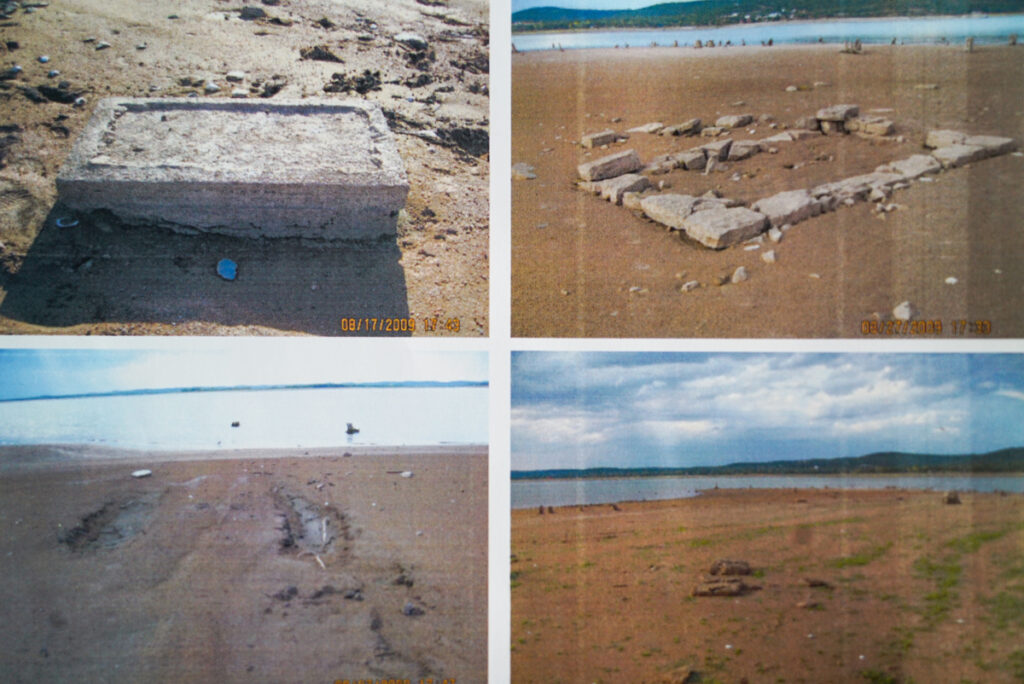
According to Mohan, who has written about and extensively researched the history of old Llano County, the Lower Colorado River Authority paid several morticians to exhume around 100 graves in the Old Bluffton cemetery before the lake filled up so the occupants could be moved to a higher, and drier, resting place.
The caskets and bodies were brought to the New Bluffton Cemetery, where they still lie today. The impressions of the old graves in the lake bottom are only visible when the water is low.
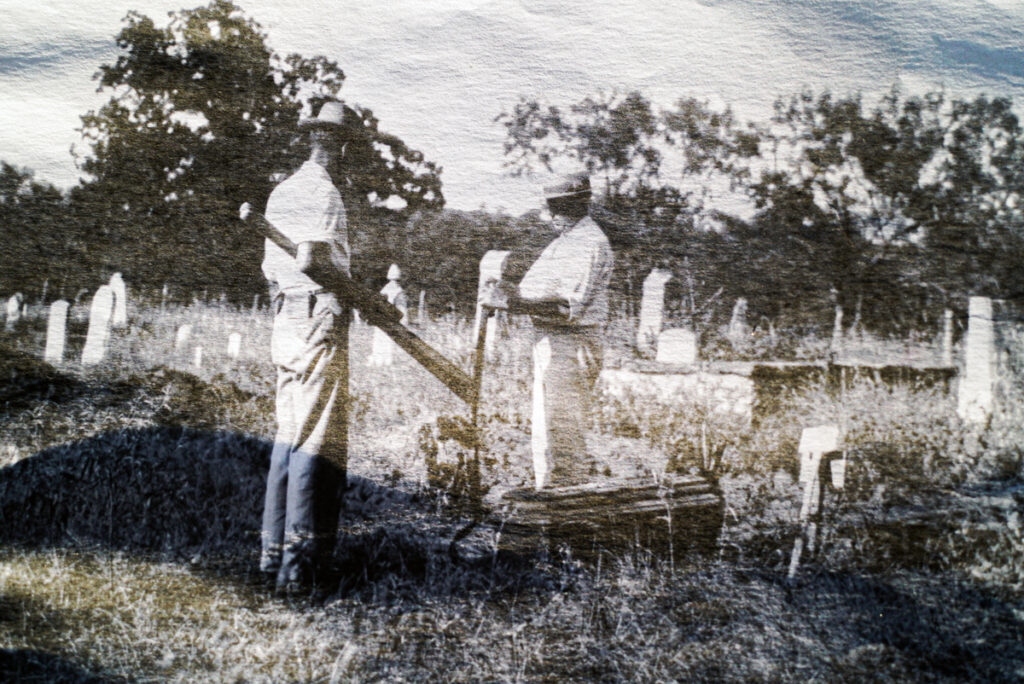
“We found a tombstone of a 6-month-old kid,” Mohan said. “You would see dozens of graves all lined up.”
Mohan used to guide boat tours to the site of Old Bluffton when Lake Buchanan was low. Vanishing Texas has since stopped making those trips, but during a drought, anyone can see it if they put in the effort. He explained that the town isn’t revealed until the lake sits at about 1,000 feet above mean sea level, which is 20 feet down from full. It can be reached by boat and a short walk when the conditions are right, or even by vehicle if the lake drops even lower, which creates a land bridge all the way from the western shore.
The site of the sunken town is on the northeast side of the lake at the end of a long chain of submerged islands that extend from a large peninsula on its western shore. When the lake is up, the closest you can get is to the end of that peninsula on Shaw Island Road by car.
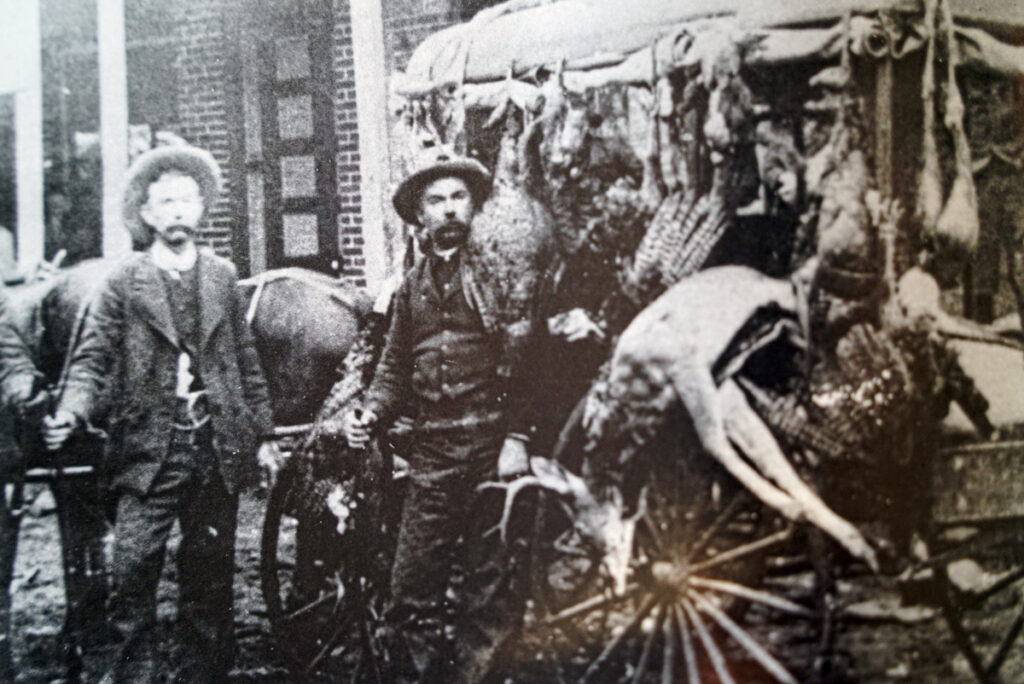
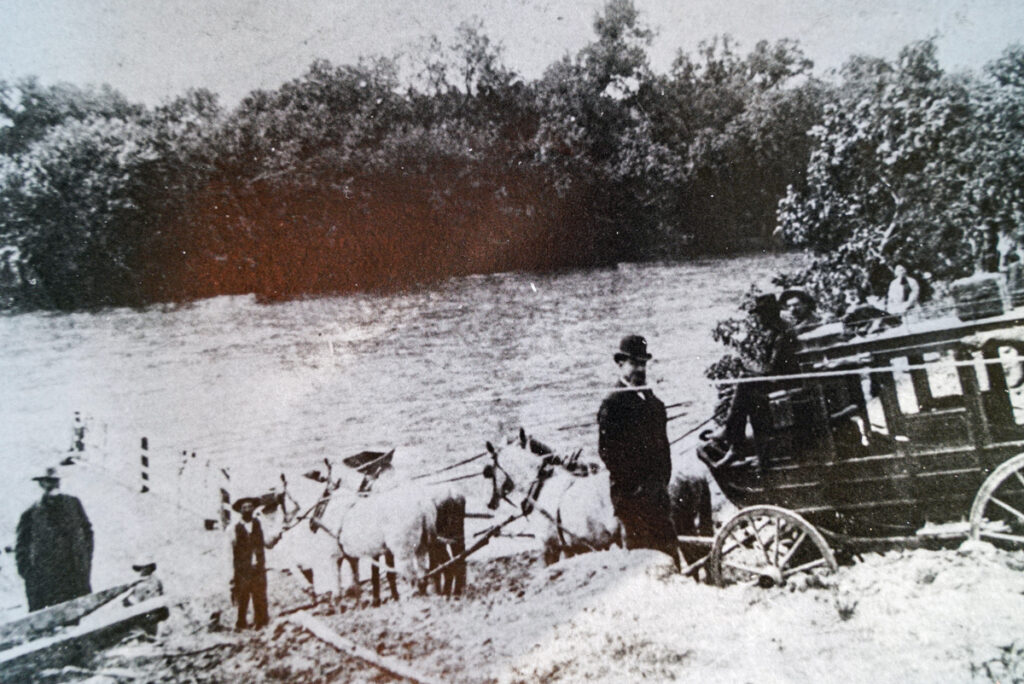
While Mohan doesn’t know of any ghost stories or paranormal activity connected with Old Bluffton, the greatest phantom might be the town itself. Founded in 1853, it was once a lively community and a popular crossing over the Colorado River. It had a saloon (regrettably burned down by drunken cowboys, according to legend), a baseball team (the Bluffton Eagles), a schoolhouse, a blacksmith shop, a general store, and multiple hotels. Now, all that remain are the footings of the structures and the indentations of graves.
New Bluffton never matched the splendor of Old Bluffton, and the community withered away as a railroad took people and business to Llano and Texas 29 was rerouted farther south. It is no longer a river crossing or a pit stop for unruly cowboys or hunters passing through; just a dim shadow of a once bustling community.
Llano writer Hazel Oatman Bowman typed a feature on Old Bluffton in a 1943 issue of The Cattleman magazine, just six years after the flood. In her story, she quoted 83-year-old Burnet resident Jim Maxwell, who had forlorn words regarding the town’s disappearance.
“There isn’t any Old Bluffton anymore,” he said. “The old Bluffton neighborhood and the old Bluffton people are all gone.”



